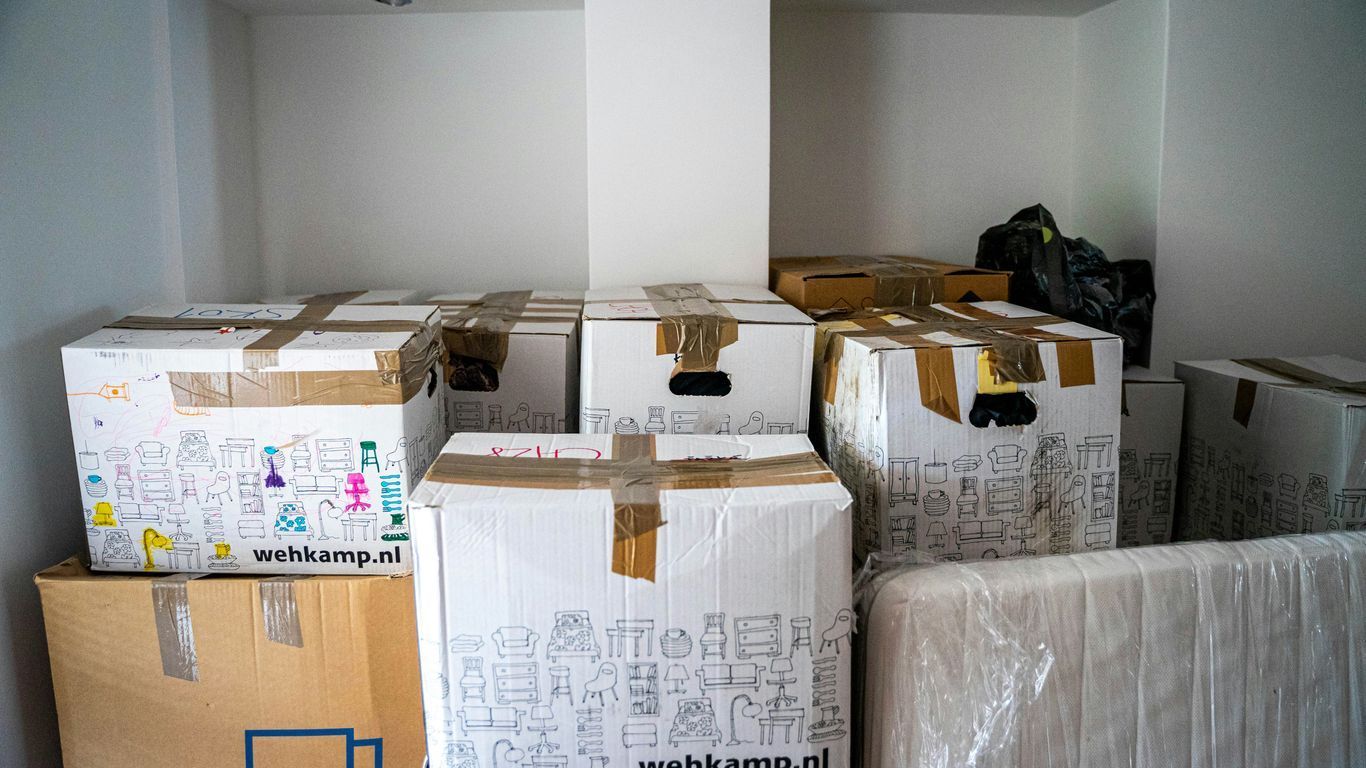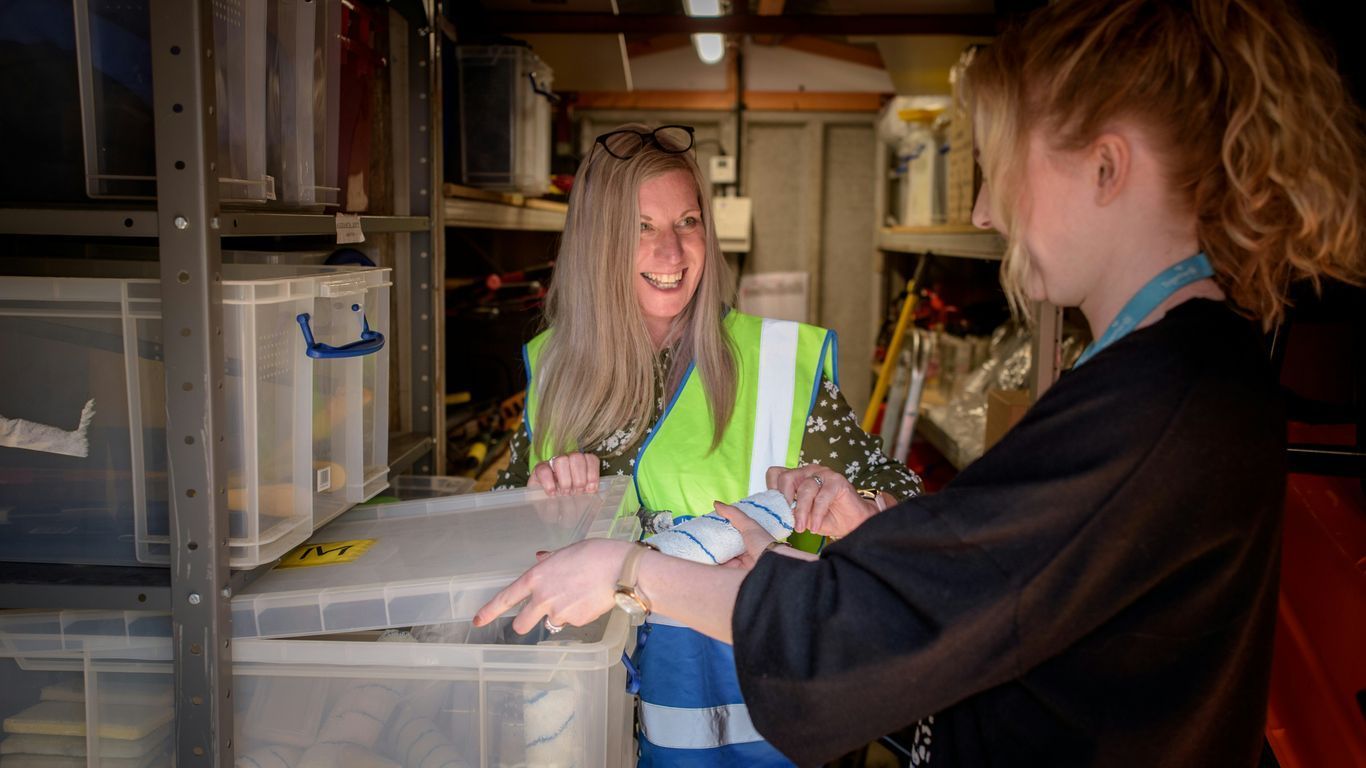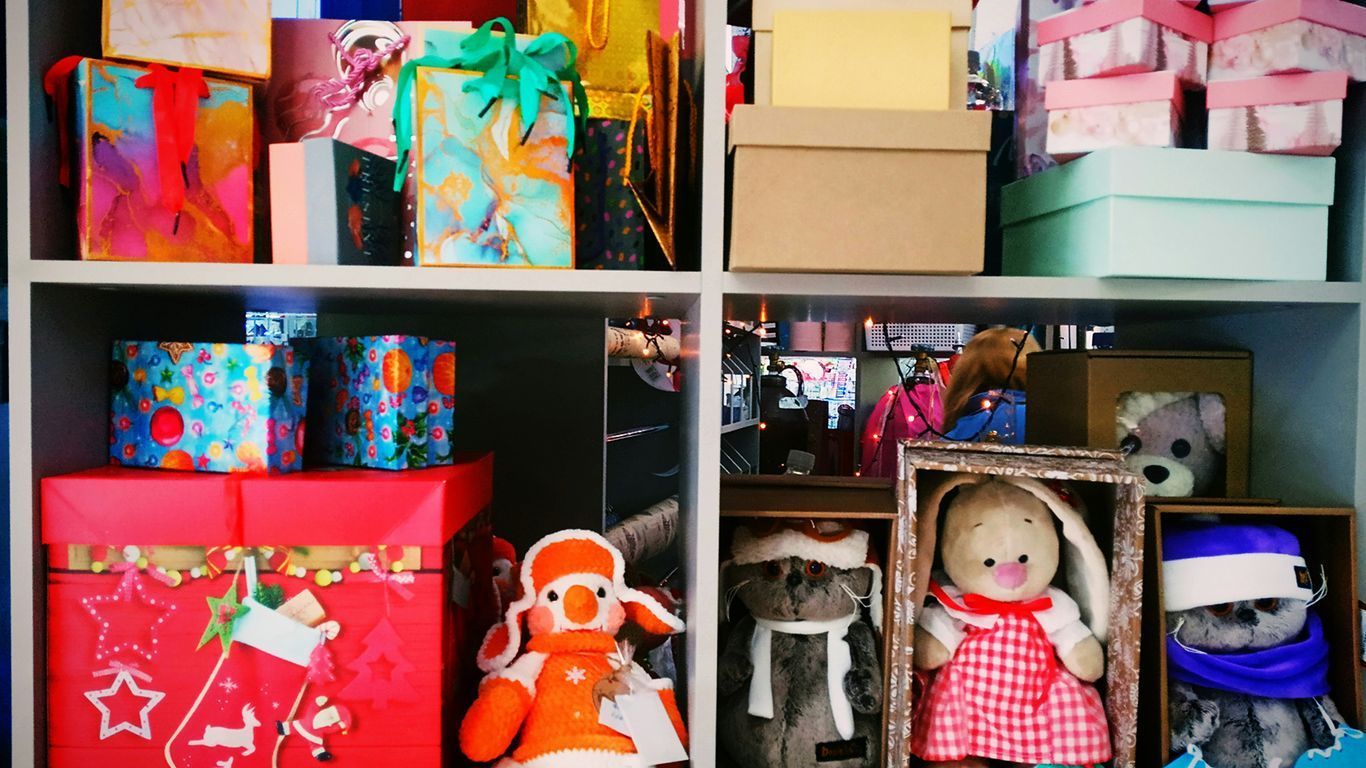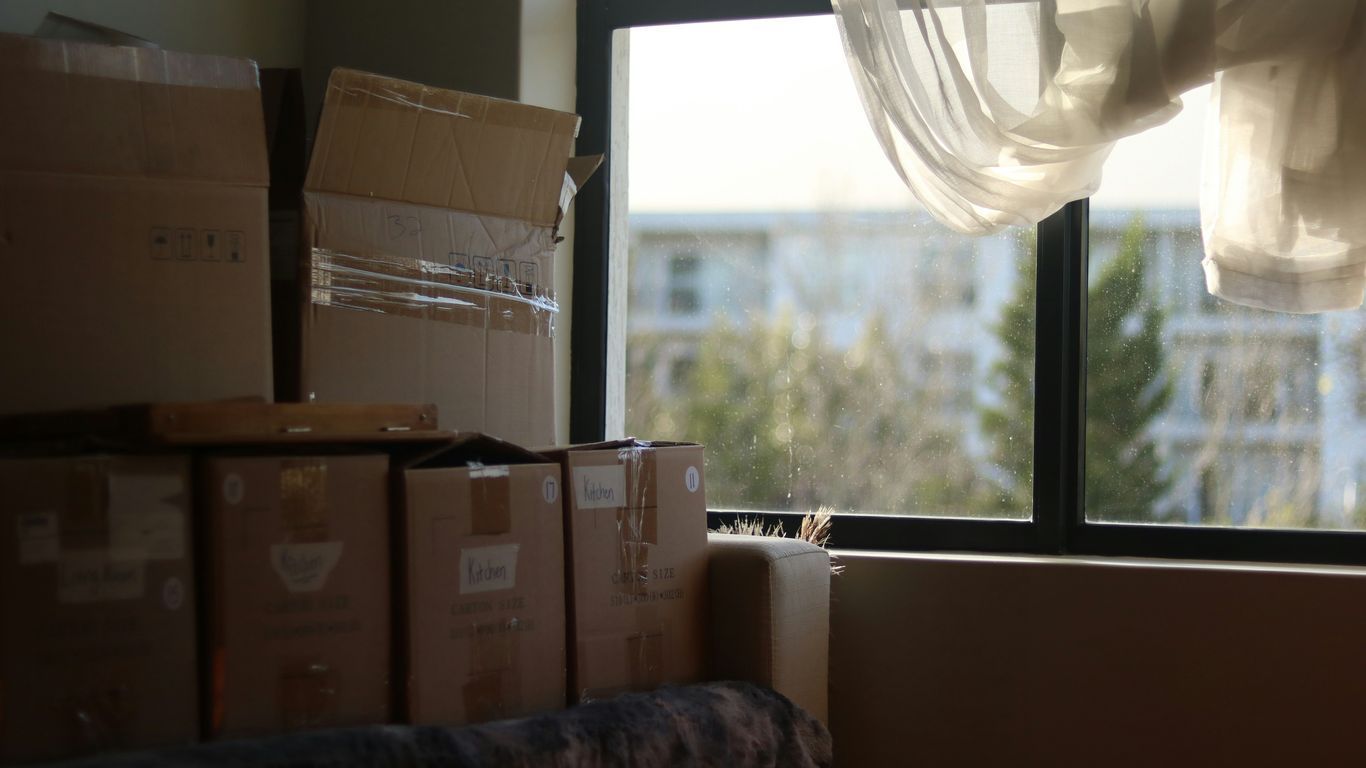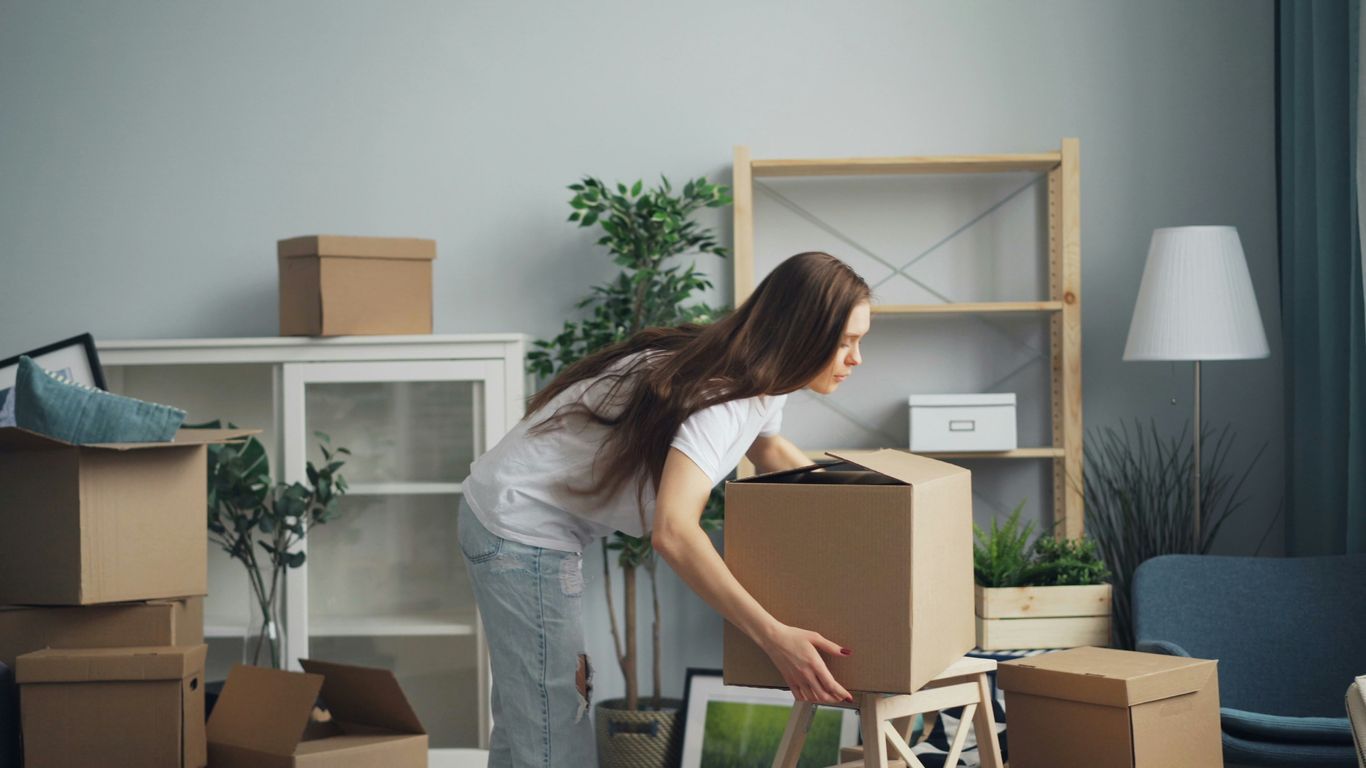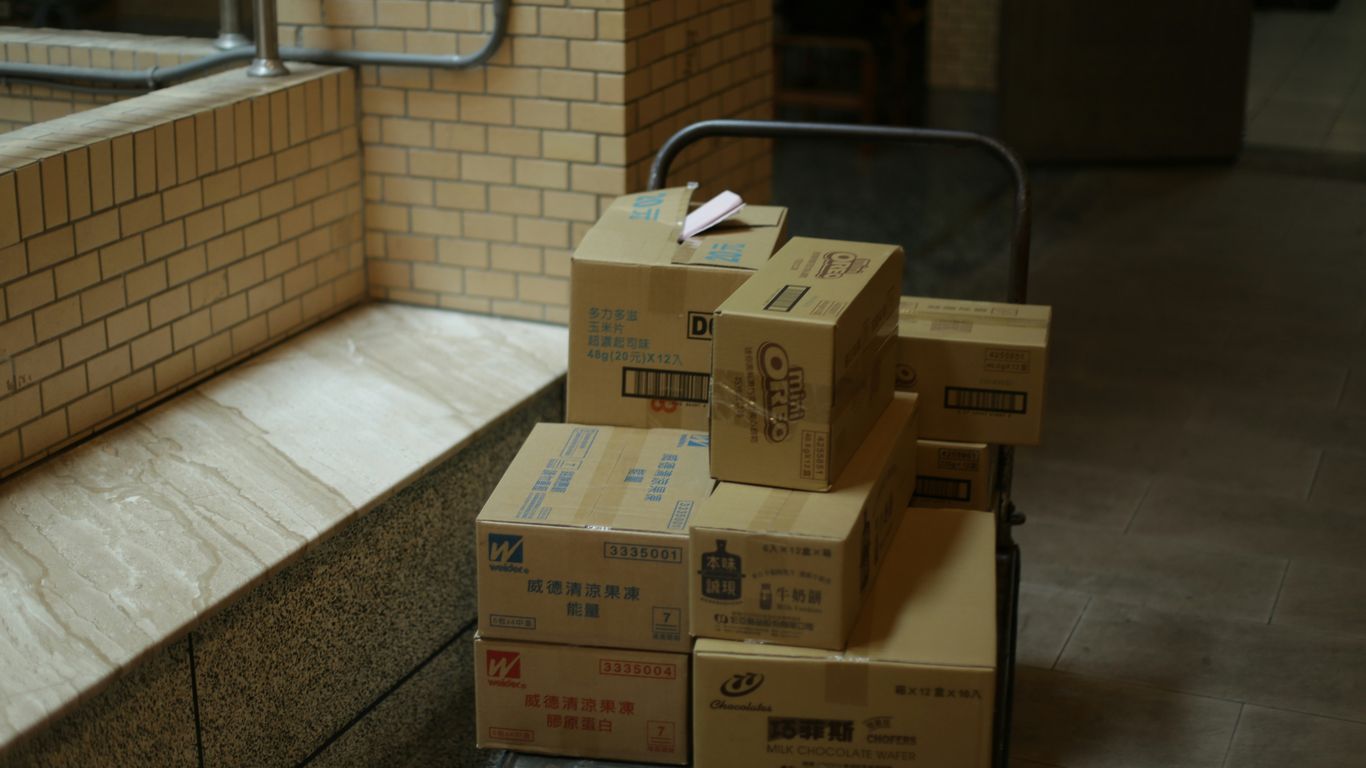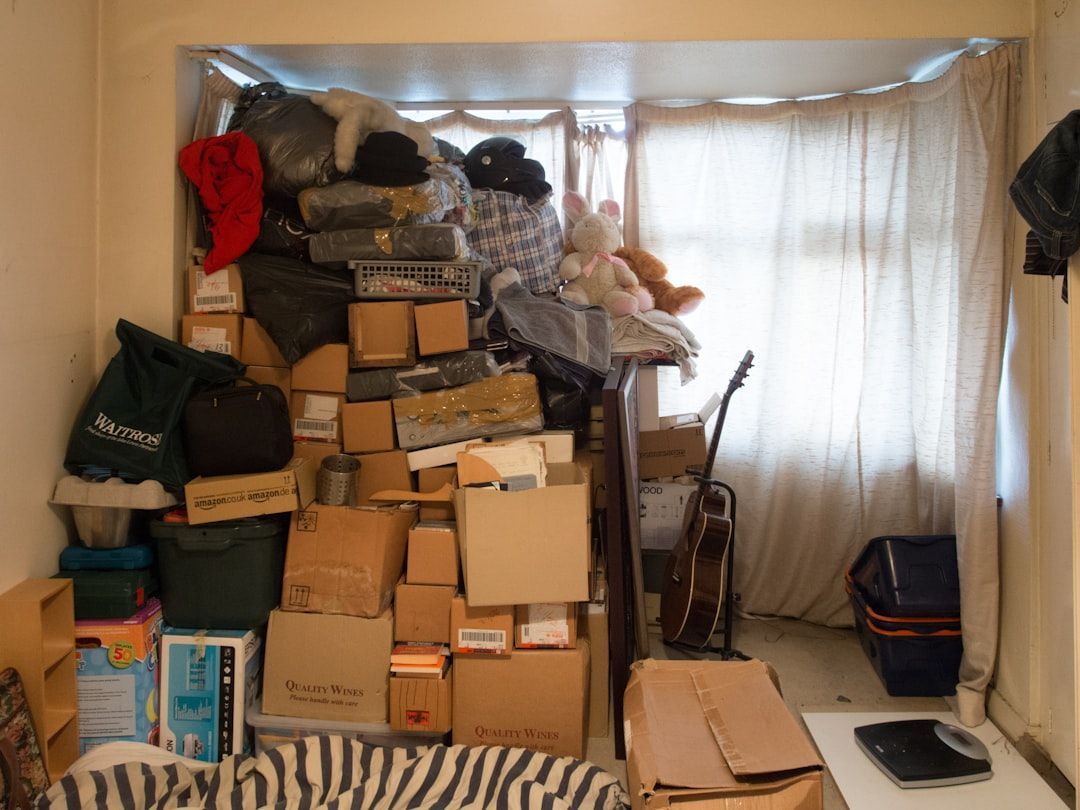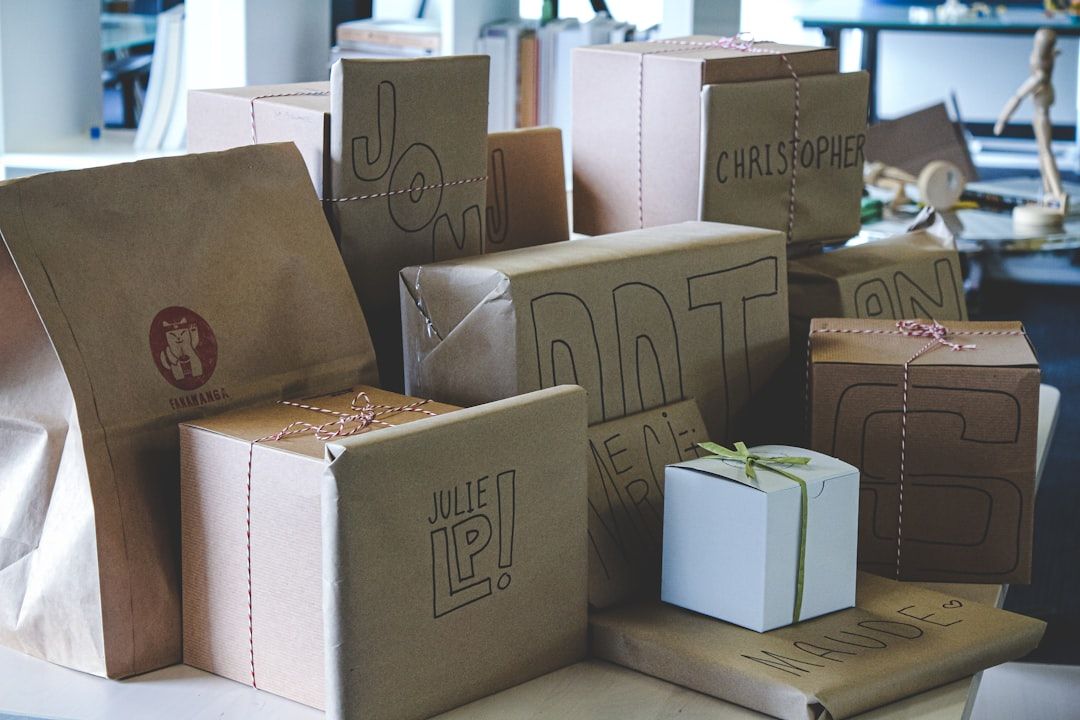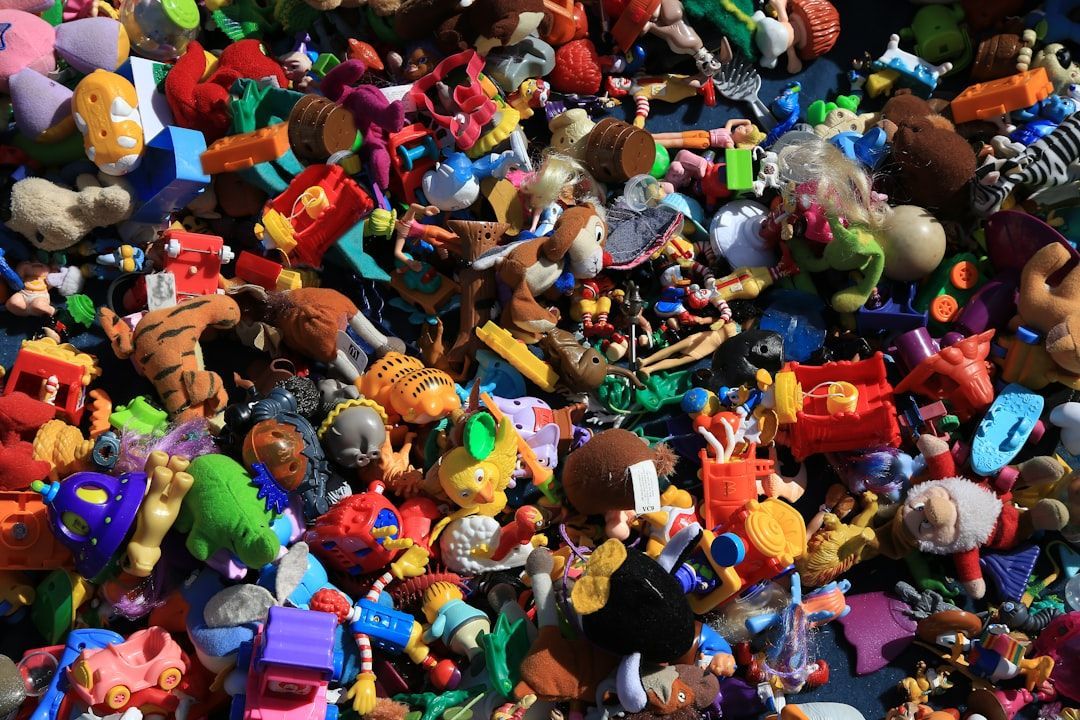How to Organize a Storage Unit Like a Pro
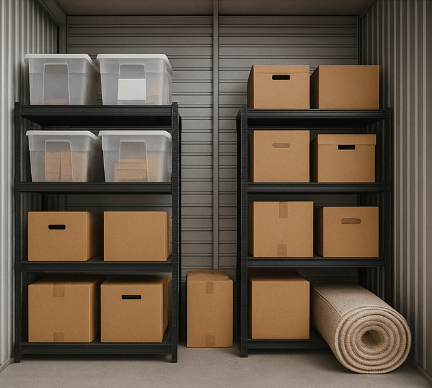
Got a storage unit that's more like a black hole than a helpful space? You're not alone! It's super easy for these units to get messy, making it a real pain to find anything. But don't worry, getting your storage unit in order doesn't have to be a huge headache. With a few simple tricks, you can turn that chaotic space into an organized dream. We'll show you the best way to organize storage unit, so you can actually find your stuff when you need it.
Key Takeaways
- Always plan your layout before you start moving things in.
- Use shelves to make the most of the vertical space.
- Clear plastic bins are your best friend for seeing what's inside.
- Label everything clearly, and label all sides of your boxes.
- Keep a map of your unit so you know exactly where everything is.
Plan Your Storage Unit Layout
Create a Detailed Floor Plan
Before you even think about moving a single box, you really need to sit down and sketch out a plan for your storage unit. It's like designing a tiny apartment, but for your stuff. You'll want to know the exact dimensions of your unit first. Then, grab some paper and a pencil and start drawing. Think about everything you're putting in there.
- Draw out the unit to scale.
- Include any large items like furniture or appliances.
- Mark where you plan to put shelving units.
This initial planning stage is super important because it helps you visualize the space and avoid just piling things in haphazardly. A little bit of foresight here saves a lot of headaches later on.
Maximize Accessibility with Pathways
Nobody wants to play Jenga with their belongings every time they need something from the back of the unit. That's why creating clear pathways is a game-changer. You need to be able to walk into your unit and get to what you need without having to move everything else.
- Designate a main aisle from the door.
- Consider a zig-zag path for larger units.
- Ensure enough space to comfortably move around.
For those considering indoor self-storage systems, planning for wide hallways within the unit itself is just as important as planning the unit's interior layout.
Consider Large Item Placement
Large items are always the trickiest part of any storage puzzle. You can't just shove them in anywhere. They often dictate the rest of your layout. Think about what you'll be storing that's big and bulky, like a couch, a refrigerator, or even a motorcycle.
- Place the largest items first.
- Position them against walls to save space.
- Ensure they don't block access to other areas.
Optimize Vertical Space with Shelving
When you're trying to get the most out of your storage unit, thinking up is just as important as thinking out. You've got all this vertical space, so why not use it? Stacking things directly on top of each other can get pretty unstable, and it makes getting to anything at the bottom a real pain. That's where shelving comes in. It's a game-changer for keeping things organized and accessible.
Invest in Sturdy Shelving Units
Look, you don't want your carefully stacked boxes to come crashing down. That's why picking out shelving that can handle some weight is super important. Think about what you're storing. If it's a bunch of heavy books or tools, you'll need something more robust than if it's just light holiday decorations. Metal shelving is usually a good bet for durability, but there are other options too.
- Check the weight capacity listed on the shelving unit.
- Consider how easy it is to assemble and disassemble, especially if you might move it later.
- Make sure the shelves are deep enough for your biggest boxes or items.
Choose Affordable Plastic Shelving
Okay, so while metal is great for heavy stuff, sometimes you just need something practical and budget-friendly. This is where plastic shelving really shines. It's often much cheaper, lighter, and still pretty good for a lot of common storage items. Plus, it won't rust, which is a nice bonus in a storage unit that might not have perfect climate control.
You don't need to break the bank to get organized. Sometimes the simplest solutions are the best, and plastic shelving can be surprisingly effective for keeping your unit tidy without a huge investment.
Keep Items Off the Floor
This one might seem obvious, but it's worth repeating: get your stuff off the floor! Even if your storage unit seems dry, you never know when a small leak or some condensation might happen. Plus, keeping things elevated helps protect against pests. Shelving, even just a few inches off the ground, makes a big difference. It also makes sweeping or cleaning the unit a lot easier if you ever need to.
- Prevents potential water damage.
- Deters pests from making a home in your boxes.
- Makes cleaning the unit much simpler.
- Maximizes your storage unit capacity by using vertical space efficiently.
Strategize Your Container Choices
Utilize Clear Plastic Bins
When it comes to picking out containers for your storage unit, clear plastic bins are a game-changer for visibility and protection. Unlike cardboard boxes, which force you to guess what's inside or rely solely on labels, clear bins let you see everything at a glance. This saves a ton of time and frustration when you're trying to find something specific. Plus, they're way more durable than cardboard, standing up to repeated use and offering better defense against moisture and pests. Think about it: no more opening five boxes just to find that one holiday decoration.
Using clear containers means you can quickly scan your unit and pinpoint items without having to unpack or disturb stacks. It's a simple change that makes a huge difference in how efficiently you can manage your stored belongings.
Stay Consistent with Container Sizes
It might seem like a small detail, but using containers that are all roughly the same size can make a massive difference in how organized and stable your storage unit becomes. When your bins are uniform, stacking them is a breeze. You get:
- More stable stacks that are less likely to topple over.
- Better use of vertical space, as there are no awkward gaps.
- A neater, more professional-looking storage unit.
- Easier planning for your layout, since you know how many bins will fit in a given area.
This consistency helps you maximize every inch of your unit and keeps things looking tidy. For example, plastic bins for moving are often designed to be stackable, making them ideal for storage units.
Protect Items from Dust and Pests
One of the biggest advantages of choosing the right containers, especially plastic ones, is the superior protection they offer against common storage unit nuisances like dust, dirt, and pests. Cardboard, while cheap, is porous and can easily be compromised by moisture or insects. Plastic bins, on the other hand, provide a sealed environment that keeps your belongings safe and clean. This is especially important for items you don't access often or those that are sensitive to environmental factors. Investing in good quality, sealed containers means your items will be in the same condition when you retrieve them as they were when you stored them.
Implement a Robust Labeling System
Labeling is not just about sticking a piece of paper on a box; it's about creating a system that works for you, making sure you can find what you need without a treasure hunt. Think of it as your personal library catalog for your stored items. A good labeling system saves you time and a lot of headaches down the road. It's the difference between quickly grabbing that one specific item and rummaging through every single box.
Label All Sides of Boxes
It might seem like overkill, but trust me, labeling all visible sides of your boxes is a game-changer. When you stack boxes, often only one or two sides are easily seen. If you only label the top, you'll be unstacking everything just to see what's inside. By labeling multiple sides, you ensure that no matter how a box is placed or stacked, its contents are immediately identifiable. This simple step cuts down on search time dramatically. Use a permanent marker or sturdy labels that won't fall off or fade over time. You want these labels to last as long as your items are in storage.
Use Clear and Concise Labels
When it comes to labels, clarity is king. Don't write a novel on each box. Instead, use brief, descriptive terms that accurately reflect the contents. For example, instead of "Miscellaneous Kitchen Stuff," try "Kitchen - Pots & Pans" or "Kitchen - Small Appliances." If a box contains items from multiple categories, list the main ones. You can also number your boxes and keep a separate, more detailed inventory list. This way, the label on the box is a quick reference, and your inventory provides the specifics.
A well-thought-out labeling system is the backbone of an organized storage unit. It transforms a chaotic space into an efficient, easily navigable area, allowing you to retrieve items quickly and without frustration. This proactive approach to organization pays dividends every time you visit your unit.
Consider Advanced Labeling Methods
For those who want to take their labeling to the next level, there are several advanced methods to consider. These can be especially useful if you have a large volume of items or frequently rotate your stored goods.
- Color-Coding: Assign different colors to different categories of items (e.g., red for holiday decorations, blue for documents, green for tools). You can use colored tape or colored labels.
- Numbered Inventory System: Assign a unique number to each box. Then, create a digital or physical spreadsheet that lists the contents of each numbered box in detail. This allows for very specific tracking.
- QR Codes: For the tech-savvy, you can generate QR codes for each box. When scanned with a smartphone, the QR code can link to a document or note detailing the box's contents. This is a fantastic way to manage a large inventory and provides efficient item retrieval.
No matter which method you choose, the goal is to make finding your belongings as easy as possible. A little effort in labeling now will save you a lot of time and stress later.
Map Out Your Storage Unit
Develop a Storage Unit Map
Okay, so you've got all your stuff packed up, labeled, and maybe even got some shelving. Now what? Well, if you're serious about not losing your mind every time you visit your storage unit, you need a map. Think of it like a treasure map, but instead of gold, it leads to your old college textbooks or that box of holiday decorations. A good map saves you a ton of time and frustration. It doesn't have to be fancy, just a simple drawing of your unit's layout with where everything is. You can sketch it on a piece of paper, or if you're feeling techy, use a basic drawing app on your phone or computer. Just make sure it's clear and easy to understand.
Having a visual guide to your storage unit is a game-changer. It helps you quickly locate items without having to dig through every single box, and it makes putting things away a lot simpler too. It's all about working smarter, not harder, when it comes to storage.
Update Your Map Regularly
Life happens, right? Things get added, things get taken out. Maybe you finally got rid of that old couch, or you just inherited a bunch of antique dishes. Whatever the change, your map needs to reflect it. It's not a one-and-done deal. Every time you move stuff around, add new boxes, or remove items, take a few minutes to tweak your map. If you don't, it'll quickly become useless, and you'll be back to square one, rummaging around like you never even made a map in the first place. Just a quick scribble or a drag-and-drop on your digital version will do the trick.
Keep the Map Accessible
So you've got this awesome map, but where do you keep it? You don't want it to be another thing you have to hunt for. The best spot is right there in your storage unit. You could:
- Tape it to the inside of the unit door.
- Laminate it and hang it on a hook near the entrance.
- Keep a digital copy on your phone or in a cloud service you can easily access.
The idea is that when you open your unit, the map is right there, ready to guide you. No more forgetting it at home or having to go back for it. It's all about convenience, making your storage unit visits as smooth as possible.
Sort Items by Usage Frequency
When you're getting your storage unit ready, it's not just about cramming everything in. You really need to think about how often you'll need to get to certain things. Putting the stuff you'll use a lot right up front saves you a ton of hassle later on. It's all about making your life easier, not harder, when you pop over to grab something.
Place Frequently Used Items Upfront
Think about what you'll need to grab often. Maybe it's seasonal decorations, certain tools, or files you access for your business. These items should be placed closest to the entrance of your unit. You don't want to be digging through a mountain of boxes just to find your Christmas lights in December. It's a simple idea, but it makes a huge difference in how convenient your storage unit is.
If you're not careful, a storage unit can quickly become a black hole where things disappear. By strategically placing items based on how often you'll need them, you transform it into an organized extension of your home or office, making retrieval a breeze.
Group Similar Items Together
Once you've figured out what goes up front, start grouping things that belong together. This means all your kitchen stuff in one area, all your holiday decorations in another, and so on. It sounds obvious, but it's easy to just throw things in. When you group similar items, it helps with:
- Finding things quickly.
- Keeping your inventory straight.
- Making sure you don't forget where something is.
This also helps when you're trying to maximize small storage units because you're not wasting space with random items scattered everywhere.
Use Dollies for Easy Movement
Even with the best planning, sometimes you'll need to move things around. This is where dollies come in super handy. They're not just for moving heavy furniture into the unit; they're great for shifting stacks of boxes or larger items that might be blocking something you need. Having a few on hand, or even just one sturdy one, can save your back and a lot of time. Consider:
- A hand truck for tall stacks of boxes.
- A furniture dolly for wider, heavier items.
- Wheeled carts for smaller, more frequent trips.
This way, if you do need to get to something buried a bit deeper, you can easily roll things out of the way without breaking a sweat.
Prepare Large Items for Storage
When you're getting ready to put things into storage, especially the big stuff, it's not just about shoving it in there. You really need to think about how you're going to handle those larger items. It makes a huge difference in how much space you use and how easy it is to get things out later. Trust me, a little prep work now saves a lot of headaches down the road.
Disassemble Bulky Furniture
Taking apart large furniture pieces is a game-changer for maximizing your storage unit's capacity. It's like playing Tetris, but with your actual belongings. Think about beds, dining tables, and even some larger shelving units. If it can be broken down, do it. Not only does it save a ton of space, but it also makes these items much easier to move around. Trying to maneuver a fully assembled king-size bed frame through a storage unit door is just asking for trouble, and probably some scraped knuckles. Plus, it helps prevent damage to the furniture itself during transport and storage. You'd be surprised how much more you can fit when everything is flat-packed.
Keep All Parts Together
Once you've disassembled something, the next critical step is to keep all the bits and bobs together. There's nothing worse than going to reassemble a piece of furniture only to find you're missing a crucial screw or a specific dowel.
- Use small, sealable plastic bags for screws, nuts, bolts, and any other tiny hardware.
- Label each bag clearly with the name of the furniture piece it belongs to.
- Tape these bags securely to one of the larger, more obvious pieces of the disassembled item, or put them in a clearly marked box dedicated to hardware.
- Consider wrapping larger, flat pieces of furniture, like tabletops or headboards, in moving blankets or bubble wrap to protect them from scratches and dings.
This simple habit will save you so much frustration when it's time to put everything back together. You don't want to be hunting for a specific bolt when you're already tired from moving.
Save Instruction Manuals
This might seem like a small thing, but it's incredibly important. If you've taken something apart, you'll likely need the instructions to put it back together, especially if it's a complex piece. Even if you think you remember how it goes, a manual can be a lifesaver.
Keep all instruction manuals in a single, clearly labeled folder or box. This way, when you're ready to retrieve your items, you'll have all the necessary guides at your fingertips. It's a small organizational step that prevents major reassembly headaches.
It's also a good idea to take photos of the item before you disassemble it. Sometimes, a visual reminder is even better than a diagram. For more tips on organizing your unit, check out how to create multiple aisles for easier access.
Got big stuff you need to put away? It can be tricky, but with a little planning, you'll be a pro. Learn all the best ways to get your large items ready for storage by visiting our website today!
Wrapping Things Up
So, there you have it. Getting your storage unit in order might seem like a big job, but it's really not that bad if you break it down. Just remember to plan things out, use those shelves, and label everything. It makes a huge difference, trust me. You'll save yourself a ton of headaches later on, and finding what you need will be way easier. A little effort now means a lot less stress down the road. Seriously, you'll thank yourself.
Frequently Asked Questions
How do I decide what goes where in my storage unit?
It's a good idea to put things you'll need often right near the front of your storage unit. That way, you won't have to dig through everything to find them. Think about what you use most and keep it handy!
What kind of containers should I use for my items?
Clear plastic bins are super helpful because you can see what's inside without opening them all up. They also protect your stuff better than cardboard boxes from dust and little critters.
Are shelves really necessary in a storage unit?
Absolutely! Shelves help you use the space going up, not just across. They keep your boxes safe from getting squished and make it easier to find things. Plus, they keep your stuff off the floor, which is always a good idea.
Should I label my boxes, and if so, how?
Yes, labeling is a must! Write clearly on all sides of your boxes so you can always see what's inside, no matter how they're stacked. You can even use fancy methods like QR codes if you have a lot of stuff.
Why do I need a map of my storage unit?
A map is like a treasure map for your storage unit! It helps you remember where everything is, especially if you have a big unit or many boxes. Keep it updated and taped inside your unit so it's always there when you need it.
Is it better to take apart large items before storing them?
If you have big furniture or other bulky items, taking them apart can save a lot of space. Just make sure to keep all the pieces together and hold onto any instruction manuals so you can put them back together later.

